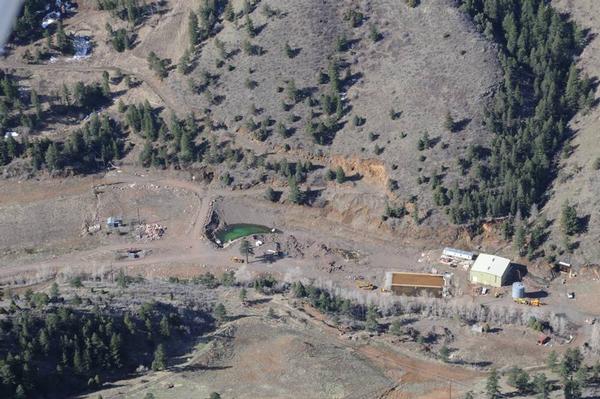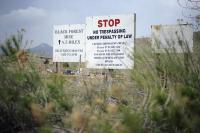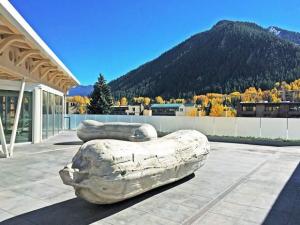- Oct 13:
- Cotter Corp. vows to remove uranium-tainted water from shuttered Colorado mine
- Oct 4:
- Colorado demands Cotter Corp. clean up mine that's leaking uranium
- Sep 29:
- Colorado regulators order Cotter to do more to stop uranium contamination of water
- Jun 28:
- Cotter Corp. has Colorado's OK to dump radioactive sludge into leaking pond
Cotter Corp. is defying state orders to clean up its contaminated uranium mine west of Denver and refusing to pay fines for failing to do so.
State mining regulators' latest inspection has found that uranium-tainted water is rising toward the rim of Cotter's defunct Schwartzwalder mine upstream from a Denver Water reservoir.
State regulators on Monday were moving to increase a $55,000 fine and schedule another enforcement hearing in November. They said unless emergency powers can be invoked, state law leaves few other options.
"It's the drinking water supply. We're very concerned about it. We're doing everything we can," said senior environment protection specialist Tony Waldron of Colorado's Department of Natural Resources.
Since April, Cotter, a subsidiary of San Diego-based General Atomics, has faced repeated state orders to pump and treat toxic water filling the mine, northwest of Golden along Ralston Creek. The creek, which flows into Denver Water's Ralston Reservoir, contains uranium levels as high as 310 parts per billion — more than 10 times the 30 ppb health standard for drinking water.
State officials had offered to suspend all but $2,500 of current fines if Cotter would comply by Aug. 31.
"In most instances, a company would respond to that," Waldron said.
Cotter vice president John Hamrick declined to discuss the conflict, saying "Cotter has not changed its position."
A pumping operation begun in July removes contaminants from surface alluvial ponds along Ralston Creek, he said. But water in the 2,000-foot- deep mine shaft is untouched.
Cotter contends water in the mine shaft is not connected to groundwater.
State mining regulators argue that water in the mine is connected to both groundwater and the creek.
The mine water contains uranium at levels more than 1,000 times state and federal standards.
A state inspection this month found the water had risen to 14 feet below the rim of the mine, from 29 feet below it in May.
A plug at the top of the mine should prevent toxic water from overflowing directly into Ralston Creek. If it fails, "things could start seeping out," Waldron said.
State mining regulators on Sept. 16 notified Cotter they will hold the company accountable for additional violations.
Officials from the Colorado Department of Public Health and Environment have not tested the water inside the mine and are relying on Cotter's testing results on water discharged into Ralston Creek, said spokesman Mark Salley.
"In general, the Water Quality Control Division wants to make sure waters discharged from the mine meet water-quality standards," Salley said.
Drinking water delivered to 1.3 million metro area residents "continues to meet drinking-water standards, and our current treatment process is able to handle uranium at these levels," said Denver Water spokeswoman Stacy Chesney.
However, "the responsible thing for Cotter to do is to clean up the mine water to ensure water quality," Chesney said. "We're concerned that Cotter is not following the state's order."
Bruce Finley: 303-954-1700 or bfinley@denverpost.com


 Font Resize
Font Resize





Article Comments